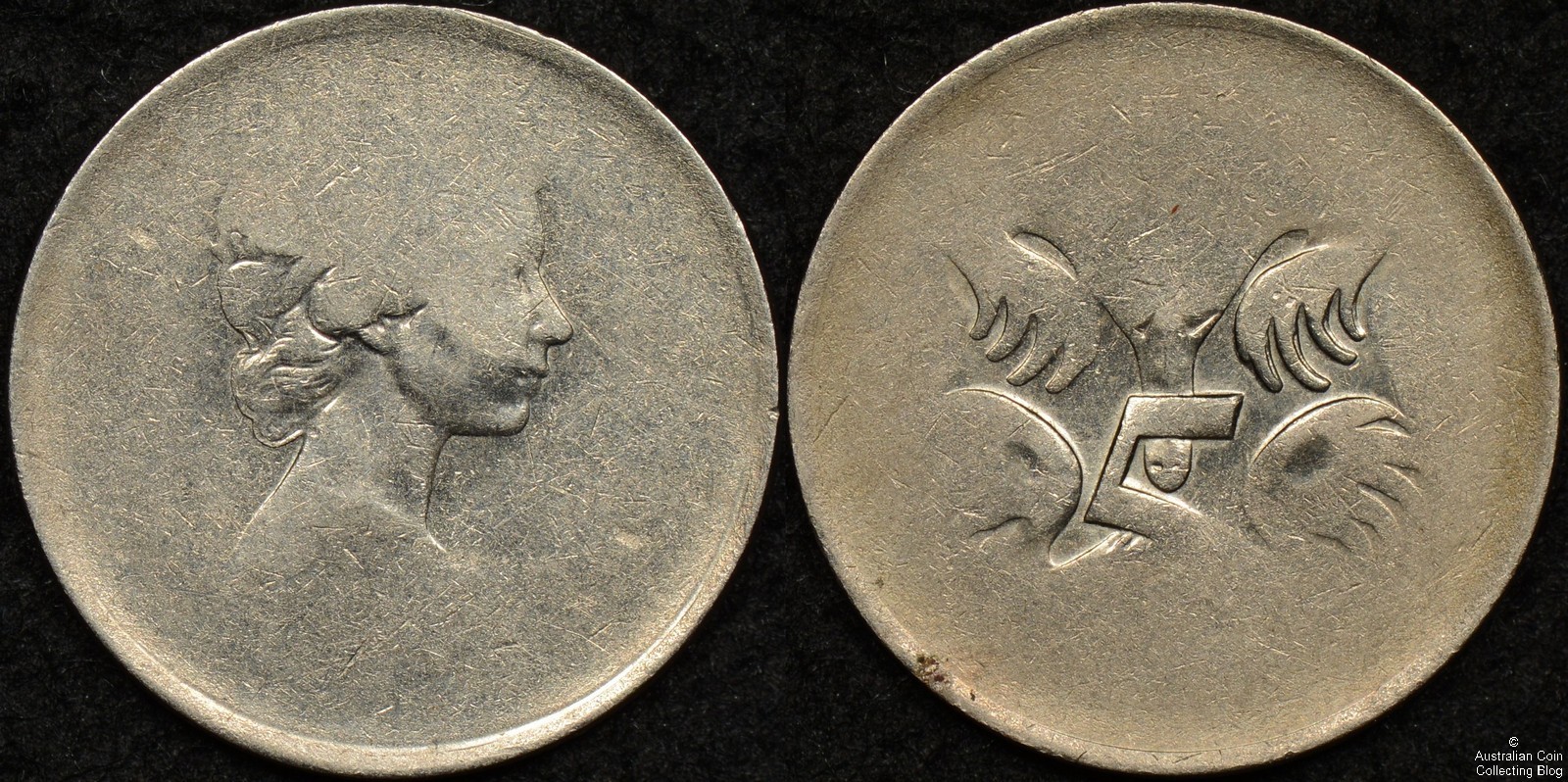The error coin pictured above in today’s error coin spotlight is a very nice example of a die adjustment strike, weak strike or touch strike Australian 5 cent piece. These are all names used for this type of error coin. We can see the central part of Stuart Devlins’ echidna design and the same of the early Arnold Machin portrait of Queen Elizabeth II. This dates the coin somewhere between 1966 and 1984.
Generally this type of error coin is created during the setup process of a die pair while press operators are dialling in the correct striking pressure at the Mint. It can also happen if there is a malfunction in the press and a lower than desirable pressure strikes the coin.
It is distinctly different from a coin that is for example struck through oil as both sides of the coin are uniformly weakly struck in the same areas. It is also the correct weight at 2.81 grams within the tolerance of the specification of an Australian 5 cent (2.83 grams). This is important if the coin is underweight then the error may have occurred due to lost coin metal which is most often post mint damage (PMD) and not a genuine error coin.
This genuine error coin from the Royal Australian Mint has seen some circulation and would grade to Extremely Fine and is a lovely example of its’ type.


